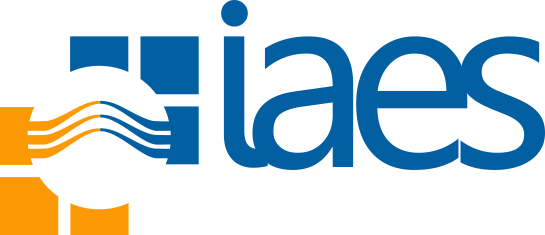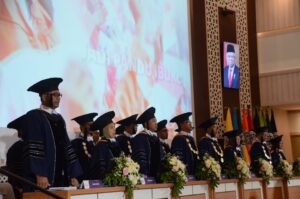Sinta (Science and Technology Index), delivering acces to citations and expertise in Indonesia. Web-based research information system offering fast access, easy and comprehensive to measure the performance of researchers, institutions and journals in Indonesia. Sinta provide benchmarks and analysis, identification of research strength of each institution to develop collaborative partnerships, to analyze the trend of research and expert directories.
What is SINTA?
SINTA, or Science and Technology Index (SINTA), is an online system for measuring the performance of science and technology in Indonesia. It provides access to research publications, citations, and research performance metrics for institutions, researchers, and journals. SINTA aims to enhance the visibility and accessibility of Indonesian research outputs and improve the evaluation and benchmarking of research performance. It is managed by the Ministry of Research, Technology, and Higher Education of Indonesia. Key features of SINTA include:
- Publication and Citation Metrics: SINTA provides data on the number of publications and citations, helping to assess the impact and productivity of researchers and institutions.
- Researcher Profiles: Researchers can create and manage their profiles, showcasing their research outputs, collaborations, and academic achievements.
- Institutional Rankings: SINTA ranks universities and research institutions based on their research performance.
- Journal Metrics: It includes information on Indonesian journals, their impact factors, and indexing status.
SINTA aims to support the development of science and technology in Indonesia by promoting transparency and accountability in research activities.
How is SINTA calculated?
SINTA (Science and Technology Index) calculates its metrics using a combination of bibliometric indicators and other evaluation criteria. Here’s an overview of how SINTA’s calculations are typically structured:
- Publication Count:
- Number of Publications: The total number of research papers, articles, conference papers, and other scientific publications authored by a researcher or affiliated with an institution.
- Journal Quality: Publications are weighted based on the quality of the journals in which they appear. Journals indexed in reputable databases like Scopus and Web of Science often carry more weight.
- Citation Metrics:
- Total Citations: The total number of times a researcher’s publications have been cited by other works. This metric is used to assess the impact and influence of their research.
- H-Index: A measure of both productivity and citation impact of the publications. A researcher has an index of h if h of their papers have been cited at least h times each.
- Journal Metrics:
- Impact Factor: The average number of citations received per paper published in a journal during the preceding years. This metric helps in evaluating the journal’s influence.
- SJR (SCImago Journal Rank): A measure of the scientific influence of scholarly journals that accounts for both the number of citations received by a journal’s articles and the importance of the journals where such citations come from.
- Institutional Performance:
- Aggregate Metrics: The performance of institutions is evaluated by aggregating the publication and citation data of their affiliated researchers.
- Collaboration Networks: Evaluating the extent and impact of collaborative research, both nationally and internationally.
- Researcher Profiles:
- Comprehensive Data: Individual researcher profiles include all relevant publication and citation data, allowing for a detailed evaluation of their research contributions.
- Additional Metrics:
- Research Grants and Funding: Information on the amount and sources of research funding can also be factored into the performance metrics.
- Academic and Professional Recognition: Awards, honors, and professional memberships that reflect the researcher’s standing in the academic community.
SINTA aggregates these metrics to produce overall performance scores and rankings for researchers, institutions, and journals. This multi-faceted approach allows SINTA to provide a comprehensive evaluation of the research landscape in Indonesia. The system is regularly updated to reflect new publications and citations, ensuring that the data remains current and relevant.
Is SINTA important?
Yes, SINTA (Science and Technology Index) is important for several reasons, particularly within the context of Indonesia’s research and academic landscape:
- Research Visibility and Accessibility:
- Increased Exposure: SINTA enhances the visibility of Indonesian research by providing a centralized platform for accessing publications, citations, and researcher profiles.
- Global Reach: It helps Indonesian researchers and institutions gain international recognition by showcasing their work on a widely accessible platform.
- Performance Evaluation:
- Benchmarking: SINTA allows for the evaluation and benchmarking of researchers, institutions, and journals based on various bibliometric indicators.
- Informed Decision-Making: Institutions and funding bodies can use SINTA data to make informed decisions about research funding, hiring, promotions, and collaborations.
- Promotion of Quality Research:
- Quality Assessment: By emphasizing metrics like citations and journal impact factors, SINTA encourages researchers to publish in high-quality journals and strive for impactful research.
- Improvement of Standards: It fosters a competitive environment that motivates researchers and institutions to improve their research quality and productivity.
- Institutional Ranking:
- National Rankings: SINTA provides rankings of Indonesian universities and research institutions, which can help in identifying leading institutions in various fields of study.
- International Comparison: These rankings also allow Indonesian institutions to compare themselves with their international counterparts, helping to identify areas for improvement and collaboration.
- Research Policy and Planning:
- Policy Development: Policymakers can use data from SINTA to develop and implement research policies that promote innovation and scientific development.
- Strategic Planning: Institutions can leverage SINTA data for strategic planning, focusing on areas where they can improve their research output and impact.
- Academic Collaboration:
- Networking: SINTA facilitates networking and collaboration among researchers by providing detailed profiles and publication records.
- Collaborative Projects: It helps identify potential collaborators for research projects, both within Indonesia and internationally.
- Accountability and Transparency:
- Open Data: By making research performance data publicly accessible, SINTA promotes transparency and accountability in the research community.
- Public Trust: It helps build public trust in the research outputs and contributions of Indonesian researchers and institutions.
Overall, SINTA plays a crucial role in advancing Indonesia’s research ecosystem by providing valuable data, fostering a culture of quality and excellence, and promoting international visibility and collaboration.
Comparison of SINTA with other metrics
Comparing SINTA (Science and Technology Index) with other widely used research metrics can highlight its unique features and the differences in evaluation approaches. Here are comparisons with some key metrics and systems:
SINTA vs. Scopus
SINTA:
- Focus: Primarily aimed at assessing the performance of Indonesian researchers and institutions.
- Scope: Includes Indonesian journals and publications that may not be indexed in international databases.
- Additional Metrics: Incorporates local context and additional metrics relevant to Indonesian research.
- Access: Freely accessible to the public.
Scopus:
- Focus: Global research database, widely used for international research evaluation.
- Scope: Includes a vast number of journals and publications from around the world.
- Quality Control: High standards for journal inclusion, which can sometimes exclude region-specific journals.
- Subscription-Based: Requires a subscription for full access.
SINTA vs. Web of Science (WoS)
SINTA:
- Local Emphasis: Focuses on enhancing the visibility of Indonesian research outputs.
- Inclusivity: More inclusive of local Indonesian journals.
- Government Support: Managed by the Indonesian Ministry of Research, Technology, and Higher Education.
Web of Science (WoS):
- Global Reach: Covers a comprehensive range of high-impact journals worldwide.
- Citation Index: Provides extensive citation indexing and analytics.
- Prestige: Highly regarded for its rigorous selection criteria and high-quality data.
- Access: Subscription-based model.
SINTA vs. Google Scholar
SINTA:
- Curated Data: More curated and structured data specific to Indonesia.
- Institutional Focus: Provides detailed metrics for institutions and their performance.
- Ranking System: Offers specific rankings for Indonesian researchers and institutions.
Google Scholar:
- Broad Coverage: Covers a wide range of publications, including grey literature.
- Ease of Use: Free and easy to use with a simple interface.
- Inclusion Criteria: Less stringent, which can lead to inclusion of lower-quality sources.
- Metrics: Provides citation counts, h-index, and i10-index for individual researchers.
SINTA vs. Impact Factor (Journal Impact Factor – JIF)
SINTA:
- Comprehensive: Evaluates both individual researchers and institutions, not just journals.
- Contextual Metrics: Takes into account local Indonesian context and contributions.
Impact Factor (JIF):
- Journal Specific: Measures the average number of citations to articles published in a particular journal.
- Global Standard: Widely used to assess journal quality and impact.
- Limitation: Focuses only on journals, not on individual researchers or institutions.
SINTA vs. h-index
SINTA:
- Composite Metrics: Uses a variety of metrics to evaluate research performance, including publication and citation counts.
- Institutional and National: Offers insights into institutional and national research performance.
h-index:
- Individual Focus: Primarily used to measure an individual researcher’s productivity and citation impact.
- Simple Metric: Easy to calculate and understand but does not account for the quality of citations.
Summary
SINTA offers a tailored approach to evaluating and promoting Indonesian research, considering local context and needs, and providing a comprehensive overview of research performance. In contrast, international metrics and databases like Scopus, Web of Science, and Impact Factor provide broader, global insights with stringent quality controls, while Google Scholar offers a more inclusive but less curated platform. Each system has its strengths and limitations, making them useful for different purposes and audiences.
Conclusion
In conclusion, SINTA (Science and Technology Index) plays a vital role in enhancing the visibility, evaluation, and development of Indonesian research. It offers a tailored, inclusive platform that provides comprehensive metrics for researchers, institutions, and journals within the Indonesian context. SINTA’s focus on local contributions, combined with government support, makes it a crucial tool for improving research quality and fostering transparency and accountability in the Indonesian academic community.
When compared to other metrics and databases like Scopus, Web of Science, Google Scholar, and Impact Factor, SINTA stands out for its regional emphasis and accessibility. While global systems offer broader reach and stringent quality controls, SINTA’s localized approach ensures that Indonesian research is adequately represented and assessed.
Overall, SINTA complements global metrics by providing specific insights and benchmarks for Indonesian research, promoting national and international collaboration, and supporting informed decision-making in research policy and funding. Its importance lies in its ability to foster a culture of excellence and visibility for Indonesian science and technology on both national and global stages.





